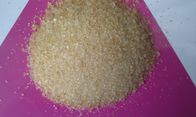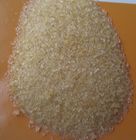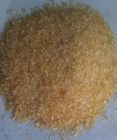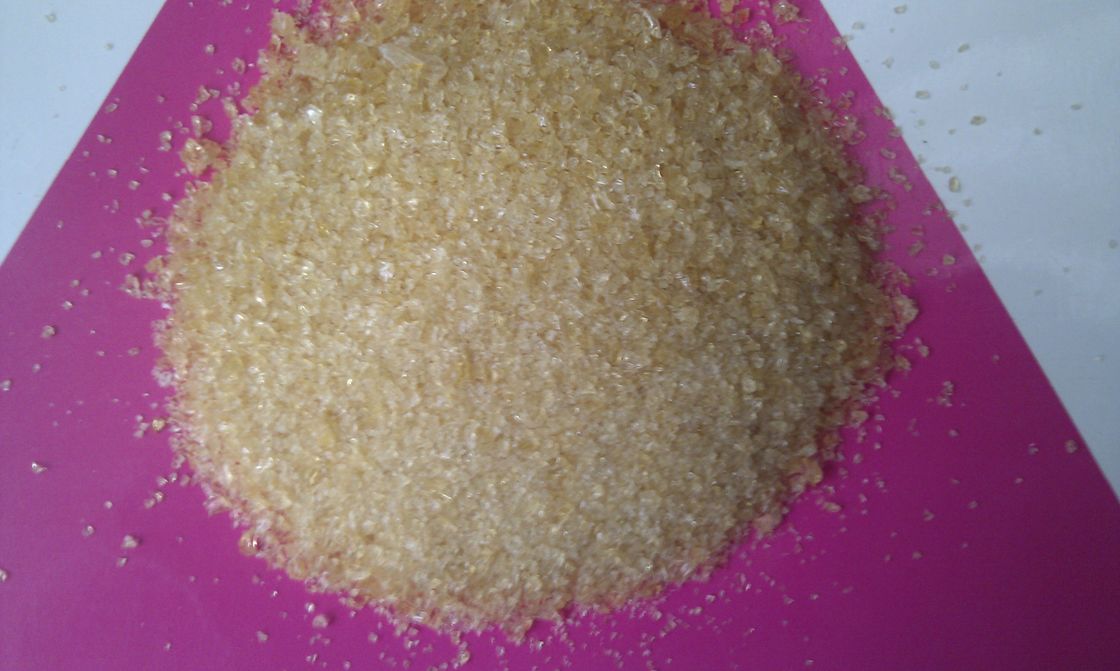1.What's your payment terms?
T/T or L/C.
2.What's your delivery time?
Usually we will arrange the shipment in 7 -15 days.
3.How about the packing?
Usually we provide the packing as 25 kg / bag or carton. Of course, if you have special requirements on them, we will according to you.
4.How about the validity of the products?
According to the products you ordered.
5.What documents you provide?
Usually, we provide Commerical Invoice, Packing List, Bill of loading, COA , Health certificate and Origin certificate. If your markets have any special requirements, let us know.
6.What is loading port?
Usually is Qingdao, Shanghai or Tianjin.
DESCRIPTION
Carse to fine powder, faintly yellow or amber in colour, the shade varying in depth according to the particle size and with a slight characteristic bouillon-like odour; stable in air when dry, but is subject to microbial decomposition when moist or in solution
FUNCTIONAL USES
Stabilizer, gelling agent, emulsifying agent, crystallization inhibitor
CHARACTERISTICS
IDENTIFICATION
Solubility: Insoluble in cold water, but swells and softens when immersed, gradually absorbing from 5 to 10 times its own weight of water; soluble in hot water, forming a jelly on cooling; soluble in acetic acid; insoluble in ethanol, chloroform and ether
Precipitate formation: To a solution (1 in 100) add trinitrophenol TS or a solution of potassium dichromate (1 in 15) previously mixed with about one-fourth its volume of dilute hydrochloric acid: a yellow precipitate is formed. To a solution (1 in 100) add mercuric nitrate solution; a white precipitate is formed which develops a brick red colour on warming.
Development of turbidity: To a solution (1 in 5,000) add tannic acid TS; the solution becomes turbid
Evolution of ammonia: When heated with soda lime, ammonia is evolved
PHYSICAL AND CHEMICAL PROPERTIES:
1. Bloom strength 80 - 280 grams
2. Moisture (% age) Less than 14%
3. pH Between 5.0–6.0
4. Ash (% age) Less than 2% w/w
5. Iron (ppm.) Less than 15 ppm.
6. SO2 (ppm) Less than 40 ppm.
7. Arsenic Less than 1 ppm.
8. Lead Less than 1.5 ppm.
9. Cadmium Less than 0.5 ppm
10. Mercury Less than 0.15 ppm
11. Odour and water A hot solution (1 in 40) is free from any disagreeable odor;
Insoluble substances when viewed in a layer 2 cm thick, shows not more than a
slight opalescence.
BACTERIOLOGICAL PROPERTIES:
1. Standard plate count (1 g) Less than 103/g
2. Escherichia coli (1 g) Less than 10 /g
3. Salmonella (25 g) Absent
4. Streptococci (1 g) Less than 102 /g

 Your message must be between 20-3,000 characters!
Your message must be between 20-3,000 characters! Please check your E-mail!
Please check your E-mail!  Your message must be between 20-3,000 characters!
Your message must be between 20-3,000 characters! Please check your E-mail!
Please check your E-mail! 




